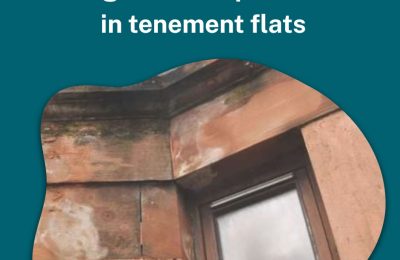Private Housing (Tenancies) (Scotland) Act 2016 introduced a number of significant changes to the private rented sector in Scotland, the most notable being the introduction of Private Residential Tenancies (PRT). One addition under the Act, which has gone under the radar, is the introduction of Rent Pressure Zones.
Rent Pressure Zones enable local authorities to request an area be designated for a localised rent cap if there is a specific and local need for it. This would mean that rents in existing tenancies could be capped at a rate of Consumer Price Index (CPI) + 1 per cent for a period of five years.
Caps could be applied for where a local authority could prove that rents in the area are rising too much, which is causing a problem for tenants and the local authority was coming under pressure to provide housing or subsidise the cost of housing as a result.
Sound familiar? Well, it should. These are almost identical to the reasons that the Scottish Government gave for introducing their highly controversial Cost of Living (Tenant Protection) (Scotland) Act 2022.
The Scottish Government stated that many people who rent their homes were facing real difficulties and “if no action was taken to support tenants, rents could increase, leaving many struggling to cope”. So in October 2022, they imposed the Cost of Living Act which capped in-tenancy rent increases at zero. This was amended in March 2023 to a cap of three per cent for private landlords (six per cent can be applied for in certain circumstances) and no cap for social landlords.
From this information, one may assume that rent pressure zones were the obvious option for local authorities who were worried about their local tenants’ increasing costs. Yet, to date, in the eight years since their introduction, there have been no applications made for rent pressure zones in Scotland.
Why then, did the Scottish Government ignore the safeguards it put in place itself? Rent Pressure Zones are a way of supporting those in certain areas, to ensure that rents don’t rise above other inflation increases. The cap set under a Rent Pressure Zone takes into account CPI, this is the measure by which we can see all costs have risen in recent years. According to the Official of National Statistics, CPI rose by 8.7 per cent in the 12 months to May 2023. This is much higher than the three per cent cap set by the Scottish Government under the current legislation.
Propertymark research has repeatedly shown that the three per cent cap is not sufficient to cover landlords’ rising costs, not only are mortgages increasing due to interest rates, but inflation has meant that maintenance, repairs, cost of labour and energy bills have all gone up. One agent told the membership body how their costs have increased by as much as 84 per cent compared to pre-pandemic levels. In February 2023, an agent in Lanarkshire said, “one landlord has had an increase in mortgage payments from £151 to £560. So even 6 per cent does not even dent his additional costs.” This is an increase of 270 per cent.
We know that the cost of living has increased for everyone, landlords and tenants alike. Yet, local authorities in Scotland did not apply for specific areas to be designated as Rent Pressure Zones, which would have supported their tenants and safeguarded against any unreasonable hikes in rents. Rent Pressure Zones are not blanket bans or a sweeping rule affecting all areas like the Cost of Living Act, but, if used effectively, could protect those in the poorest areas or the local authorities who are most affected by the increases in costs.
When Rent Pressure Zones were introduced in 2016, CPI was less than one per cent, so any increase in rent a landlord would be allowed to apply for was fairly low. However, it seems that when times actually got hard the Scottish Government renegaded on their own policies and created new hoops for landlords to jump through, alienating investment and damaging the private rented sector in Scotland.











